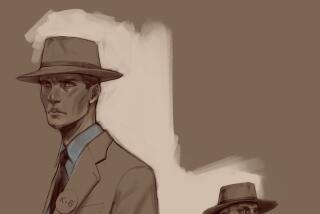Science explains how time spent outdoors colors your view of #thedress
- Share via
It set social media on fire. It divided friends and co-workers. It was a cellphone picture of a sequined dress, and now it has become a bonafide subject of scientific inquiry.
Three studies published this week in the journal Current Biology set out to understand how a single image can be interpreted so differently by so many people.
Those who see the dress as blue and black (its true color in normal light) are in the majority, according to one of the new reports. Scientists who surveyed more than 1,400 people found that 57% of them described the dress as blue and black, while 30% saw it as white and gold. (An additional 11% saw it as blue and brown, and 2% fell into an “other” category.)
“It’s clearly a crappy picture, but it turns out to be an extraordinarily powerful tool for visual neuroscientists,” said Bevil Conway, a professor at Wellesley College and the senior author of that study. “There will be dozens and dozens of papers about it over the years. This is just the beginning.”
Conway and other vision experts say the picture of “the dress” is the most extreme example known of a phemenon called categorical perception.
“We knew that individual differences in perception are bigger than most people realize, but this picture really did take us aback,” said Michael Webster, who runs the Visual Perception Lab at the University of Nevada, Reno. He was the senior author of another of the papers, which found that our brains are more likely to discount blue tones than other shades.
The dress picture is particularly intriguing because people really lock into a single interpretation of the image, Webster said.
Consider the famous optical illusion of a dancing ballerina that can be interpreted either as a figure spinning to the left or to the right — and most people can make themselves see it both ways. That does not seem to be the case with the dress.
“I haven’t met anyone who could clearly flip,” he said.
The researchers who worked on all three studies agree that the discrepancy in how people perceive the dress is due to the way their brains interpret the color of the light that reflects off the garment.
If your brain concludes that the image is illuminated by a “cool” source, like a blue sky, you’ll ignore the blue wavelengths of the visible light spectrum and determine that the dress is white and gold. However, if your brain decides the image is lit by something warm, like an incandescent bulb, you’ll discount yellow light and see the dress as blue and black.
In their survey, Conway and coauthors Rosa Lafer-Sousa and Katherine Hermann of MIT found that women were more likely to see the dress as white and gold and that the odds of seeing the dress as blue and black decreased with age.
Although they are not yet sure why that would be, their current hypothesis is that women and older people are more likely to be awake during the day, and therefore more likely to assume that their visual world is lit by blue sky.
Night owls and others who spend more time under artificial lighting may make a different assumption.
“You have in your head an internal model of what the colors of the world are, and that helps you resolve ambiguities,” Conway said.
In a smaller study of 15 people that occurred just days after the image went viral, researchers at Giessen University in Germany found evidence that the range of perceived colors is greater than the few discrete categories would suggest.
Volunteers were asked to view a picture of the dress on a computer screen. Then they were instructed to adjust the color of a circle on the same screen until it matched the hue of the dress.
The results suggest that even among people who said the dress was blue and black (or white and gold), the colors were still being perceived differently.
“The question ‘What color is the dress?’ has more than two answers,” they wrote.
They added that most people saw some shades of blue in the dress’ sequin stripes However, those who believed it was a very light blue perceived these tones to be due to the ambient lighting rather than the true color of the dress itself.
A third study, led by Webster, found that people’s brains are more likely to filter out blue tones than other colors.That may explain why so many people interpreted the dress’s blue stripes as white.
“Your visual system is always trying to separate out what color is coming from the lighting and what color is coming from the object, and you do that differently for blue and yellow,” Webster said. “When you see a bluish tint you attribute it to the light, and when you see a yellowish tint you attribute it to the object.”
When his team altered the photo by replacing the blue hues with yellow, the dichotomy in perception disappeared — most people saw the dress as clearly yellow.
Webster believes that the reason for this might be that since shadows are bluish, our brains are used to discounting the color.
“If your brain sees yellow, you think, ‘It can’t be coming from the shading, so it has to be the color of the object itself,’” he said.
Conway said that when he first saw the divisive image, his initial thought was “This is fluff.”
But after a couple of weeks, he changed his mind.
“When we got our first results, I was like, ‘This is extraordinarily profound,’“ he said. “It hits this little sweet spot that gives you some clue about how the brain works.”
Indeed, the picture sparked such a vibrant debate among vision scientists that they’re planning to devote an entire issue of the Journal of Vision to the dress next year.
Science rules! Follow me @DeborahNetburn and “like” Los Angeles Times Science & Health on Facebook.







